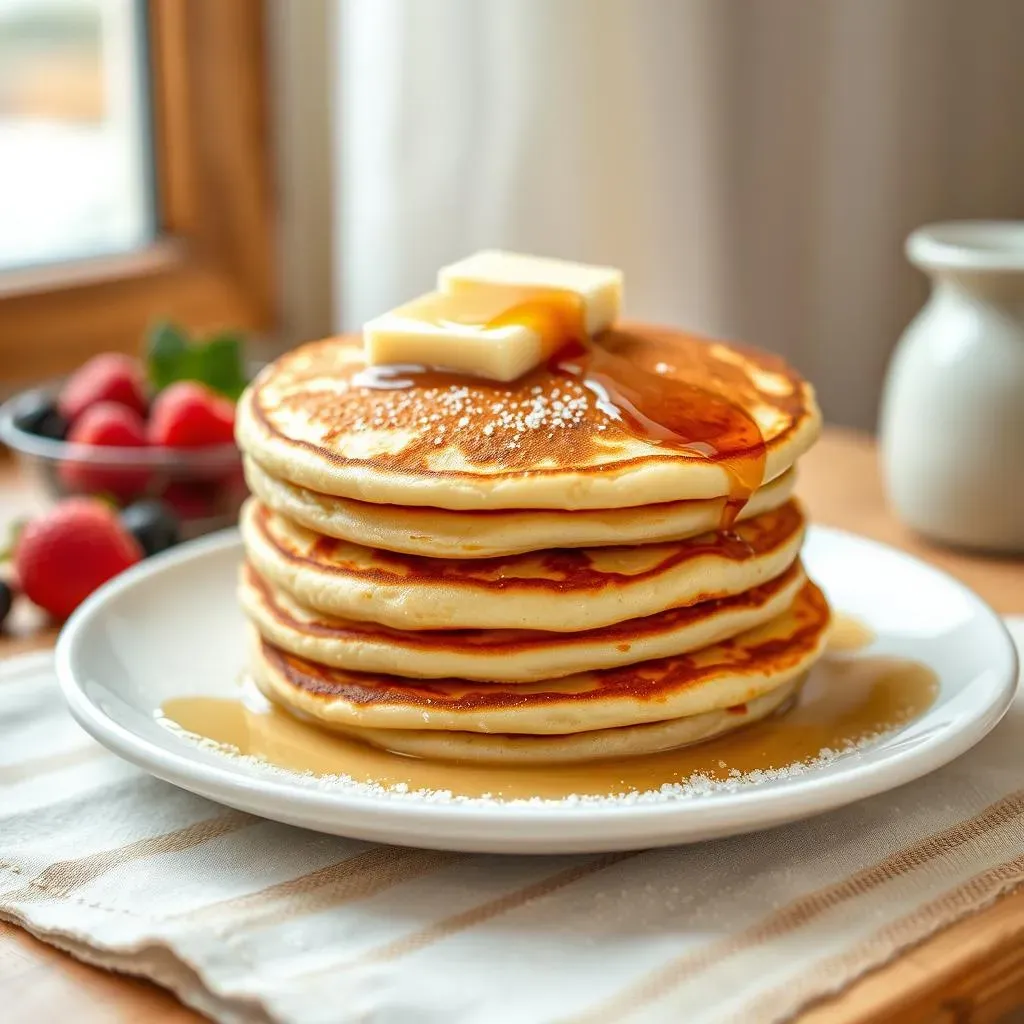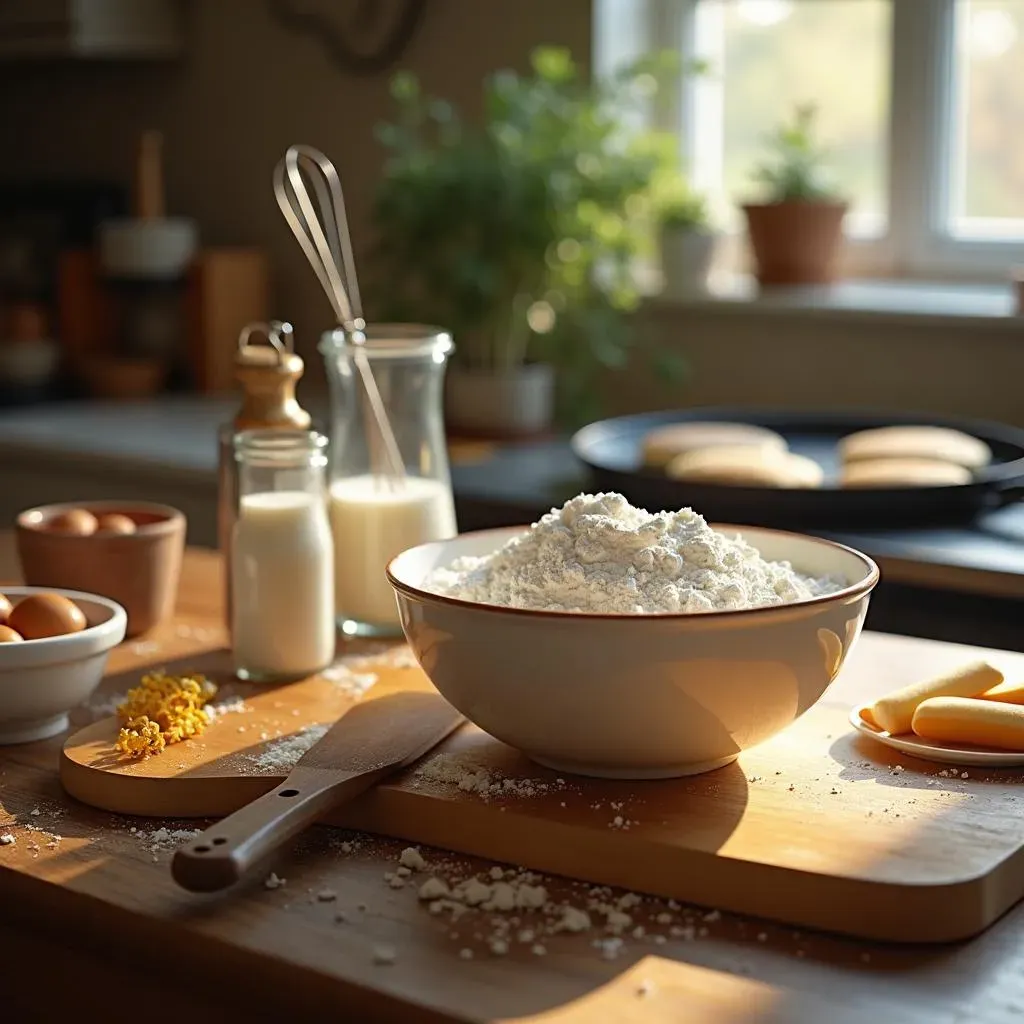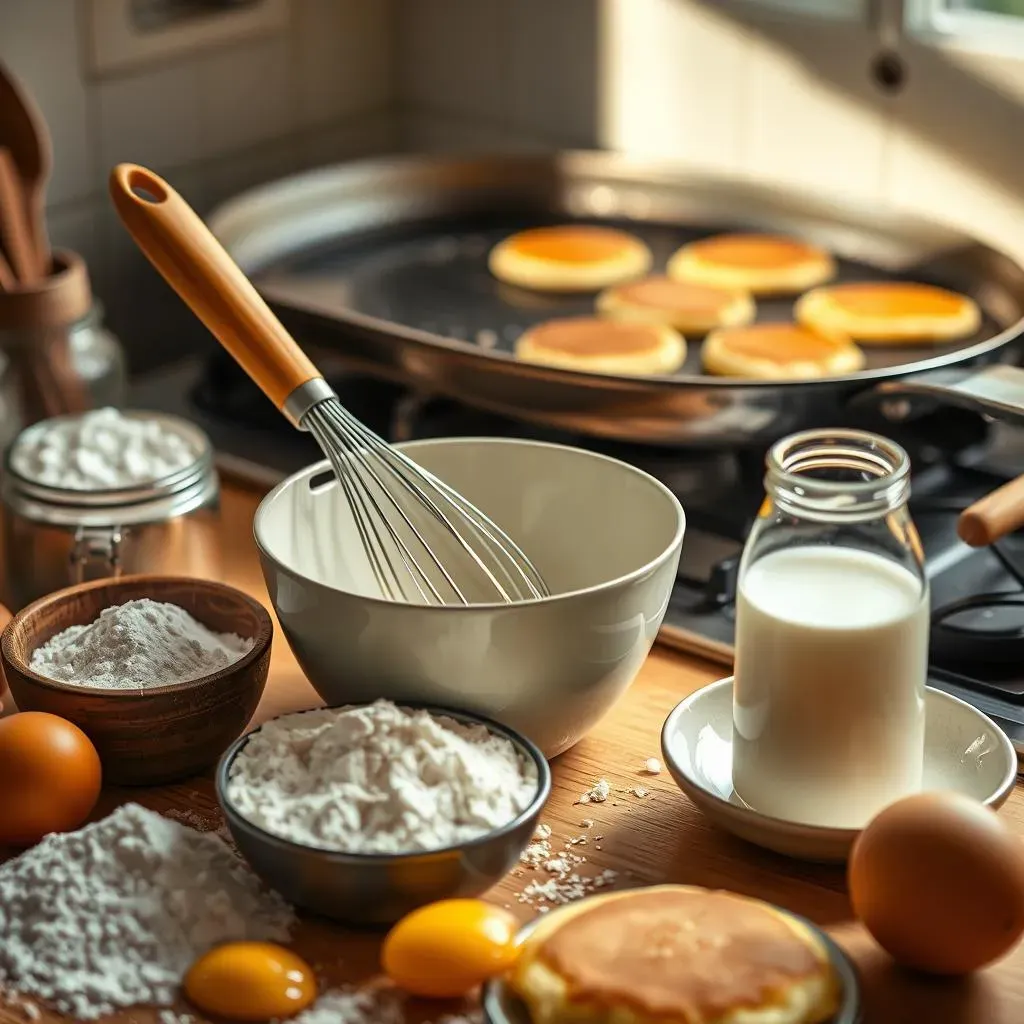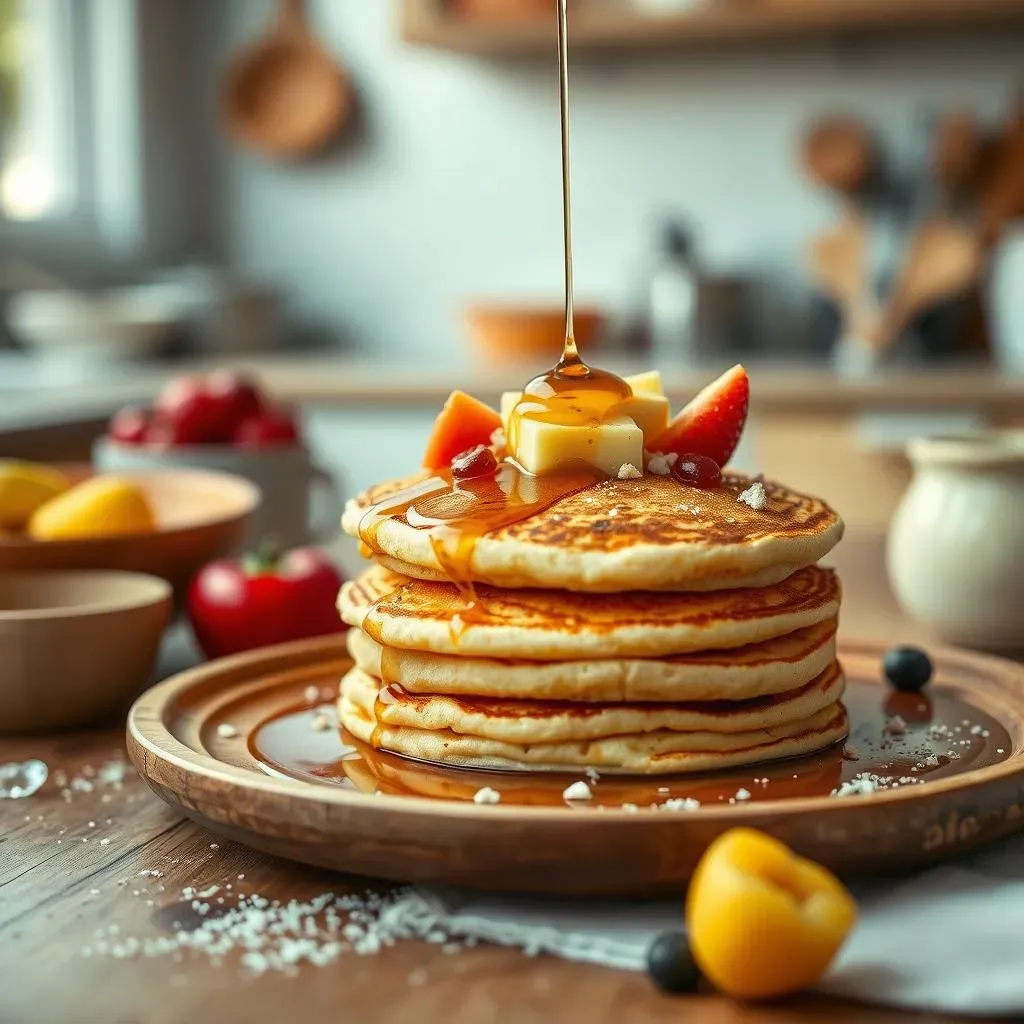Table of Contents
Few things beat the smell of freshly cooked pancakes on a weekend morning. But if you've ever felt intimidated by complicated recipes, fear not! We're here to demystify the process and show you exactly what is a basic pancake recipe. This isn't about fancy ingredients or complicated techniques; it's about mastering the fundamentals to create light, fluffy pancakes that are perfect every time. Whether you're a seasoned cook or a kitchen newbie, this guide will walk you through each step, from gathering your essential ingredients to flipping those golden-brown beauties. We'll cover everything from the must-have components of a great pancake to the simple steps that guarantee success. Plus, we'll share some insider tips and tricks to elevate your pancake game. So, grab your mixing bowl and let's get started on this delicious journey to pancake perfection!
Mastering the Basics: What is a Basic Pancake Recipe?

Mastering the Basics: What is a Basic Pancake Recipe?
The Essence of a Simple Pancake
So, what exactly constitutes a basic pancake recipe? At its heart, it's a harmonious blend of flour, a leavening agent (usually baking powder), a touch of sweetness (sugar), a pinch of salt, milk, an egg, and melted butter or oil. These ingredients work together to create a batter that, when cooked on a hot surface, transforms into a fluffy, golden-brown disc of deliciousness.
Think of it as the blank canvas of breakfast. Once you've mastered the basic recipe, you can customize it with all sorts of fun additions, from chocolate chips and blueberries to spices and extracts. The possibilities are endless!
Why a Basic Recipe Matters
You might be wondering, "Why bother with a basic recipe when there are so many fancy pancake variations out there?" Well, mastering the fundamentals is key to unlocking your full pancake potential. A solid basic recipe gives you a reliable foundation to build upon. You'll understand how each ingredient contributes to the final result, allowing you to troubleshoot and adjust as needed.
Plus, let's be honest, sometimes the simplest things are the best. A stack of perfectly cooked basic pancakes, drizzled with maple syrup and a pat of butter, is a timeless classic that never fails to satisfy.
Common Pitfalls and How to Avoid Them
Even with a basic recipe, there are a few common mistakes that can lead to less-than-perfect pancakes. Overmixing the batter is a big one. This develops the gluten in the flour, resulting in tough, chewy pancakes. Aim to mix the batter until just combined, leaving some lumps is perfectly fine.
Another pitfall is using a griddle that's either too hot or not hot enough. If the griddle is too hot, the pancakes will burn on the outside before they're cooked through. If it's not hot enough, they'll be pale and flat. The ideal temperature is around 350°F (175°C). A good way to test the temperature is to flick a few drops of water onto the griddle. If they sizzle and evaporate quickly, it's ready to go.
Quick Tips for Pancake Perfection:
- Don't overmix the batter.
- Use a preheated griddle or pan.
- Flip when bubbles form and the edges look set.
- Don't press down on the pancakes while cooking.
Essential Ingredients for Your Basic Pancake Recipe

Essential Ingredients for Your Basic Pancake Recipe
The Flour Powerhouse
Let's dive into the heart of the matter: the ingredients! First up, flour. All-purpose flour is the go-to choice for most pancake recipes, providing the structure and body we crave. But don't be afraid to experiment! Whole wheat flour adds a nutty flavor and extra fiber, while gluten-free blends cater to dietary needs without sacrificing taste. Just remember that different flours absorb liquid differently, so you might need to adjust the amount of milk accordingly. I once tried a batch with only almond flour – they were delicious but a bit more delicate, so keep an eye on them while cooking!
Leavening Agents: The Rise to Fluffiness
Next, we need something to give our pancakes that signature lift. Baking powder is the most common leavening agent, creating air bubbles that result in a light and airy texture. Make sure your baking powder is fresh; old baking powder can lose its potency, leading to flat, sad pancakes. Baking soda can also be used, but it requires an acidic ingredient like buttermilk or yogurt to activate. Speaking of buttermilk, using it instead of regular milk adds a tangy flavor and extra tenderness – highly recommended!
Sweetness and Salt: The Dynamic Duo
A touch of sweetness is essential to balance the flavors and create that irresistible pancake aroma. Granulated sugar is the classic choice, but you can also use brown sugar, honey, or maple syrup for a richer, more complex flavor. And don't forget the salt! A pinch of salt enhances the other flavors and prevents the pancakes from tasting bland. It's like the secret ingredient that ties everything together.
Liquid Gold: Milk and Melted Butter
Milk provides the moisture needed to bind the ingredients together and create a smooth batter. Any type of milk will work, from whole milk to skim milk to plant-based alternatives like almond milk or soy milk. Melted butter (or oil) adds richness and flavor, as well as helps to prevent the pancakes from sticking to the griddle. I prefer using unsalted butter so I can control the amount of salt in the recipe. But if you only have salted butter on hand, just reduce the amount of salt you add to the batter.
The Binding Agent: Eggs
Last but not least, eggs! Eggs act as a binding agent, holding all the ingredients together and adding structure to the pancakes. They also contribute to the richness and flavor. For extra fluffy pancakes, try separating the egg and whipping the egg white until stiff peaks form. Then, gently fold the egg white into the batter before cooking. This adds extra air and lightness, resulting in pancakes that are practically cloud-like.
Here's a handy table summarizing the essential ingredients and their roles:
Ingredient | Role |
|---|---|
Flour | Provides structure |
Baking Powder | Leavening agent |
Sugar | Adds sweetness |
Salt | Enhances flavors |
Milk | Provides moisture |
Melted Butter | Adds richness and prevents sticking |
Eggs | Binds ingredients and adds structure |
StepbyStep Guide: Making the Perfect Basic Pancake Recipe

StepbyStep Guide: Making the Perfect Basic Pancake Recipe
Mixing the Batter: The Art of Gentle Combination
Alright, let's get down to business! First things first, grab a large mixing bowl and whisk together your dry ingredients: flour, baking powder, sugar, and salt. This ensures that the baking powder is evenly distributed, which is key for those fluffy pancakes we're after. In a separate bowl, whisk together your wet ingredients: milk, egg, and melted butter. Now, here's the tricky part: gently pour the wet ingredients into the dry ingredients and stir until just combined. Remember, lumps are your friends! Overmixing leads to tough pancakes, and nobody wants that.
I like to use a rubber spatula for this step, as it helps to scrape the sides of the bowl and prevent any sneaky pockets of dry flour from hiding out. The batter should be thick but pourable, like a slightly lumpy milkshake. If it's too thick, add a splash of milk. If it's too thin, add a spoonful of flour. But resist the urge to overmix! Trust me, your pancakes will thank you.
Cooking the Pancakes: Achieving Golden-Brown Perfection
Now comes the fun part: cooking the pancakes! Heat a lightly oiled griddle or frying pan over medium heat. You want the surface to be hot enough so that a drop of water sizzles and evaporates within a few seconds. Pour 1/4 cup of batter onto the hot griddle for each pancake. Wait for bubbles to form on the surface and the edges to look set, about 2-3 minutes. Then, using a thin spatula, carefully flip the pancakes and cook for another 2-3 minutes, or until golden brown on both sides.
Don't be tempted to press down on the pancakes while they're cooking! This will flatten them and squeeze out all the air, resulting in dense, sad pancakes. Just let them do their thing. And if your first pancake isn't perfect, don't worry! It's often a sacrifice to the griddle gods. Adjust the heat as needed and keep practicing. Before you know it, you'll be churning out stacks of golden-brown perfection.
Tips and Tricks for Elevating Your Basic Pancake Recipe

Tips and Tricks for Elevating Your Basic Pancake Recipe
Spice It Up: Adding Flavor to Your Batter
so you've mastered the basic pancake recipe – now it's time to get creative! One of the easiest ways to elevate your pancakes is by adding spices to the batter. A dash of cinnamon, nutmeg, or cardamom can add warmth and complexity to your breakfast. For a more adventurous flavor, try adding a pinch of ginger or even a little bit of chili powder (trust me, it's delicious!). I once made a batch of pancakes with a blend of cinnamon, nutmeg, and cloves – they tasted like Christmas morning!
Extracts are another great way to add flavor. Vanilla extract is a classic choice, but you can also experiment with almond extract, lemon extract, or even maple extract. Just a teaspoon or two is all you need to make a big impact. And if you're feeling really fancy, try adding a splash of liqueur, like amaretto or Grand Marnier. Just be sure to cook the pancakes a little longer to burn off the alcohol.
- Cinnamon, nutmeg, cardamom for warmth
- Ginger or chili powder for adventure
- Vanilla, almond, lemon, or maple extract for classic flavors
- Amaretto or Grand Marnier for a boozy twist (cook longer!)
Mix-Ins Mania: From Chocolate Chips to Fruit
Another fun way to elevate your basic pancake recipe is by adding mix-ins to the batter. Chocolate chips are always a crowd-pleaser, but don't stop there! Blueberries, raspberries, strawberries, or bananas are all delicious additions. For a savory twist, try adding crumbled bacon, shredded cheese, or chopped herbs. I once made a batch of pancakes with crumbled goat cheese and chives – they were surprisingly good!
When adding mix-ins, it's important to fold them in gently to avoid overmixing the batter. And if you're using frozen fruit, don't thaw it first. Adding frozen fruit to the batter will help to keep the pancakes light and fluffy. You can also sprinkle some mix-ins on top of the pancakes while they're cooking. This not only looks pretty but also adds a nice textural contrast.
Mix-In Type | Examples | Tips |
|---|---|---|
Sweet | Chocolate chips, blueberries, raspberries, bananas | Fold in gently, use frozen fruit |
Savory | Crumbled bacon, shredded cheese, chopped herbs | Experiment with different combinations |
Texture | Nuts, seeds, coconut flakes | Sprinkle on top for added crunch |
Pancake Perfection: Your Basic Recipe and Beyond
So, you've learned what is a basic pancake recipe and mastered the art of creating fluffy stacks. Now, the kitchen is yours to command. Experiment with flavors, toppings, and techniques. Whether you stick to the basics or venture into culinary creativity, remember that the joy of cooking is in the process. Enjoy your pancakes, share them with loved ones, and savor the simple pleasure of a homemade breakfast. The possibilities are endless, and the next delicious pancake adventure is just a flip away!